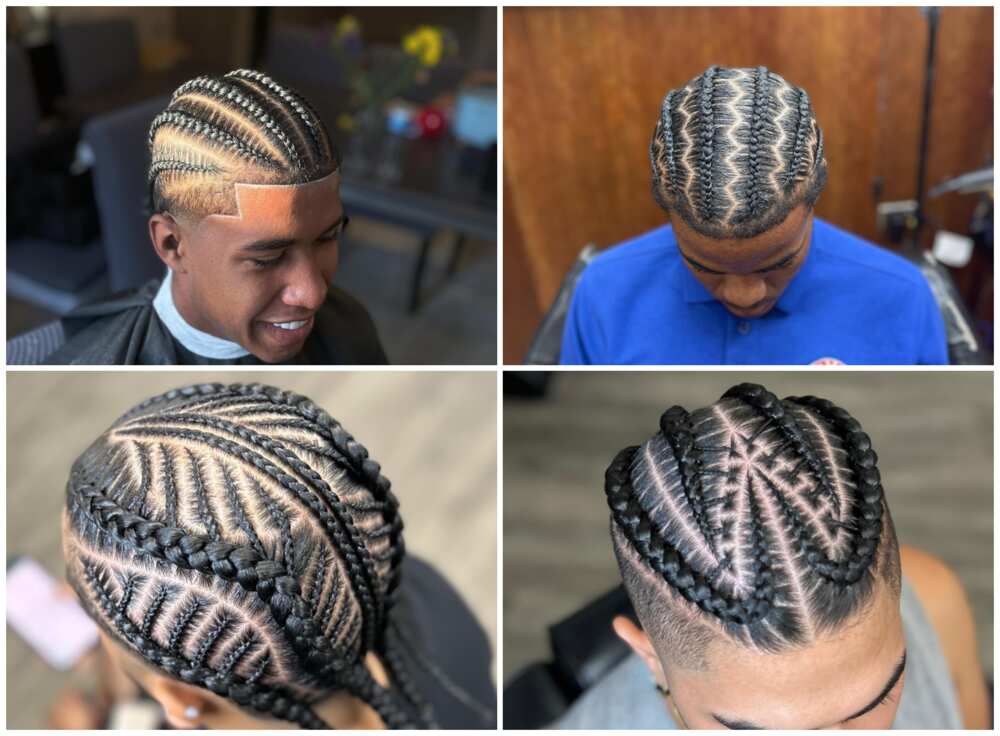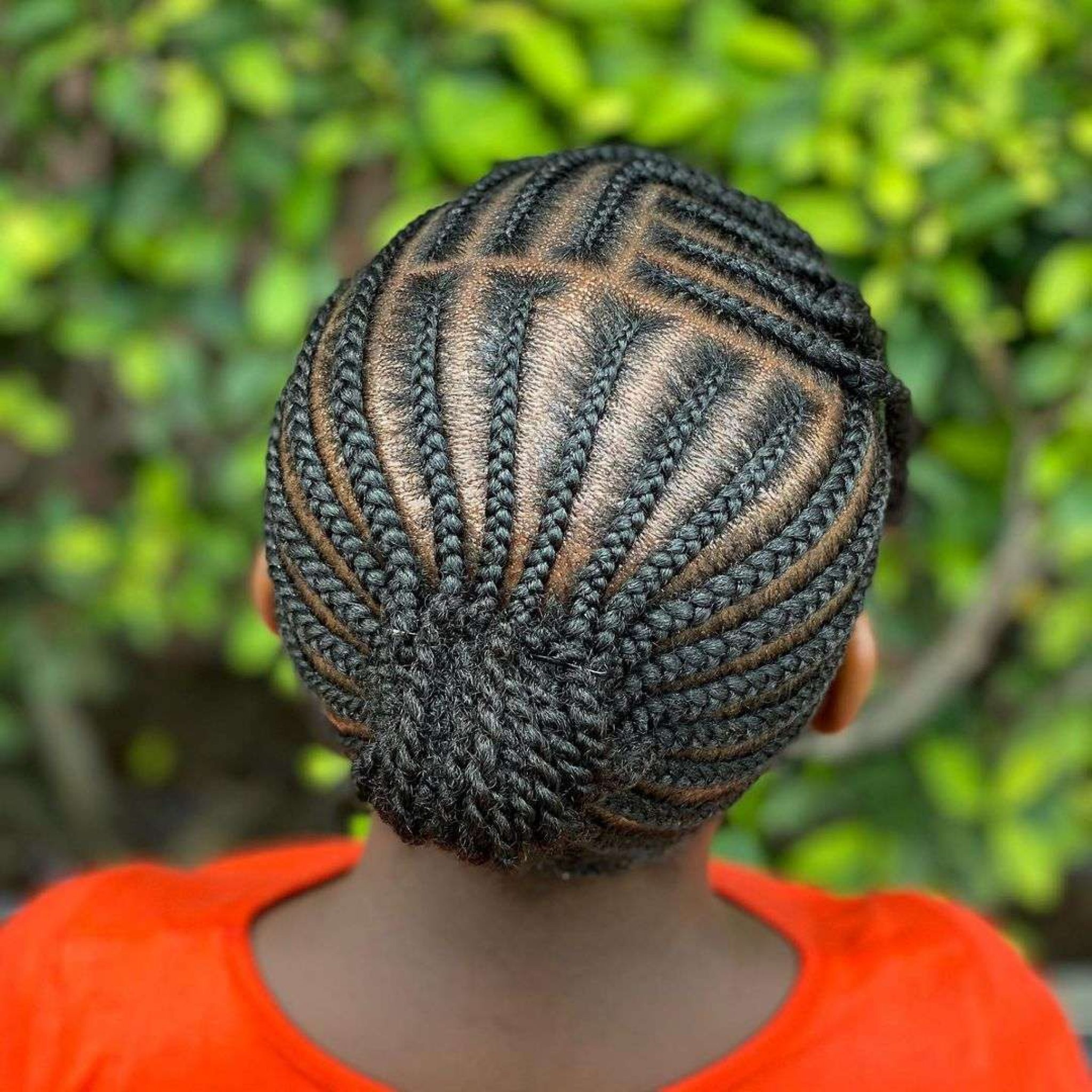In the realm of protective hairstyles, cornrows stand out for their enduring popularity and versatility, but a crucial question often surfaces: How long can one realistically expect their cornrows to last? The answer, as with most things hair-related, is multifaceted, depending on a variety of factors from hair type to maintenance practices. This article delves into the essential aspects that determine the lifespan of cornrows, offering guidance on optimal care and identifying the telltale signs that indicate it's time to bid them adieu. This comprehensive guide aims to provide you with the knowledge necessary to make informed choices, ensuring your hairstyle remains both stylish and conducive to a healthy scalp.
This exploration will encompass the ideal duration for wearing cornrows, shedding light on how different hair types and scalp conditions influence their longevity. We'll also provide expert tips for maintaining your cornrows, ensuring they stay fresh and your hair remains in top condition. Whether you're a seasoned cornrow aficionado or a newcomer intrigued by this iconic style, this article is designed to equip you with the knowledge you need for optimal care.
By the end of this piece, you'll have a clear understanding of how long cornrows can be expected to last, along with actionable steps to keep your hairstyle looking its best while promoting healthy hair. Let's get started and unravel the secrets to long-lasting, beautiful cornrows.
- Jason Aldeans Height Weight All You Need To Know
- Whats Brandi Carliles Net Worth Income Career Analysis
Table of Contents
- What Are Cornrows?
- Ideal Duration for Cornrows
- Factors Affecting Longevity
- Maintenance Tips for Cornrows
- When to Take Out Your Cornrows
- Benefits of Cornrows
- Potential Risks of Wearing Cornrows
What Are Cornrows?
Cornrows, a timeless hairstyle deeply rooted in African culture, are characterized by their unique construction: narrow, raised rows of braids that lie flat against the scalp. This distinctive style has a rich history, tracing back centuries, and remains a powerful symbol of heritage within various African communities. Its versatility is another hallmark; cornrows can be styled in an endless array of patterns, making them suitable for individuals of all hair types and textures. The artistry lies not only in the braiding itself but also in the creative possibilities it unlocks, from simple, elegant lines to intricate, eye-catching designs. Cornrows are more than just a hairstyle; they are a canvas for self-expression and a celebration of cultural identity.
Ideal Duration for Cornrows
The lifespan of cornrows can vary, typically ranging from two to eight weeks. This timeframe is influenced by several factors, including hair type, the meticulousness of the maintenance routine, and, critically, the expertise of the stylist. Heres a breakdown of the typical duration based on hair type:
| Hair Type | Ideal Duration |
|---|---|
| Fine Hair | 2-4 weeks |
| Medium Hair | 4-6 weeks |
| Coarse Hair | 6-8 weeks |
Beyond these general guidelines, it's vital to listen to your hair and scalp. Any signs of excessive tension, discomfort, or irritation should prompt you to consider removing your cornrows, regardless of the time elapsed. Prioritizing your scalp's health and your hair's well-being is paramount.
- Addison Vodka Unveiling Its Taste History Where To Buy
- George Straits Marriages A Look At Love Amp Legacy
Factors Affecting Longevity
Hair Type
Hair type is a primary determinant of how long your cornrows will last. Coarser hair, with its natural resilience and texture, often holds braids more securely, extending the style's lifespan. Conversely, fine hair tends to be more delicate, making it prone to slipping out of braids more quickly. Furthermore, if your hair is naturally prone to frizz or breakage, this can accelerate the unraveling of your cornrows, diminishing their overall appearance and longevity. Understanding your hair's inherent characteristics is crucial for setting realistic expectations and choosing appropriate maintenance strategies.
Scalp Health
The foundation of any healthy hairstyle is a healthy scalp. The condition of your scalp directly impacts how well your cornrows will hold up. If your scalp is dry, flaky, or irritated, the lifespan of your cornrows may be significantly reduced. Regular scalp care, encompassing moisturizing treatments and gentle cleansing, is essential to maintaining a balanced scalp environment. A healthy scalp not only supports the longevity of your cornrows but also promotes overall hair health, leading to stronger, more vibrant strands. Neglecting scalp health can lead to discomfort, potential hair damage, and a compromised aesthetic.
Maintenance Tips for Cornrows
To ensure your cornrows remain fresh and your hair stays healthy, adhere to the following maintenance guidelines:
- Moisturize Regularly: Hydration is key. Use a lightweight oil or leave-in conditioner to keep your scalp and hair moisturized. This prevents dryness, minimizes breakage, and keeps your braids supple. Consider applying moisturizer every other day, or as needed, based on your scalp's condition and the climate.
- Avoid Excessive Tension: The braiding process should never be overly tight. Tight braids can lead to discomfort, scalp irritation, and potentially, traction alopecia (hair loss due to repeated tension). Communicate with your stylist throughout the process and speak up if you experience any pain. Ensure the braids are comfortable and allow for natural hair movement.
- Protect at Night: Friction is a silent enemy of cornrows. Wear a satin or silk scarf, or use a satin pillowcase, to minimize friction while you sleep. These smooth surfaces prevent your braids from snagging, which can cause frizz and breakage. This simple step can significantly extend the life of your style and preserve its neat appearance.
- Limit Water Exposure: While complete avoidance is challenging, try to minimize your braids' exposure to water. Water can cause the braids to swell and lose their shape, leading to a less polished look. When washing your hair, use a shower cap and focus on cleansing the scalp. After swimming, thoroughly rinse your braids with fresh water and apply a light leave-in conditioner to maintain moisture.
When to Take Out Your Cornrows
Knowing when to remove your cornrows is crucial for maintaining healthy hair and preventing potential damage. Paying attention to your hair and scalp is paramount. Here are some key indicators that it's time to take out your braids:
- Visible Frizz or Loose Braids: This is often the first sign that your style is nearing its end. As the hair grows out and the braids loosen, frizz becomes more apparent, and the overall look becomes less polished.
- Discomfort or Tightness in the Scalp: Persistent tightness, pain, or tenderness on your scalp is a clear signal that the braids may be too tight or that your scalp is experiencing irritation. Ignoring these signs can lead to more serious issues.
- Signs of Breakage or Thinning Hair: If you notice excessive hair shedding, breakage, or thinning around the edges of your hairline, it's essential to remove the cornrows immediately. This can indicate that the braids are putting too much stress on your hair.
- Itchy or Irritated Scalp: An itchy scalp, accompanied by redness or flaking, may signal an allergic reaction to the braiding products or a buildup of product residue. This can lead to inflammation and discomfort, making removal a necessity.
Benefits of Cornrows
Cornrows are not just a fashionable choice; they offer several noteworthy benefits, making them a popular selection for diverse hair care needs:
- Protective Style: Cornrows serve as a protective barrier, shielding your hair from environmental stressors such as sun, wind, and pollution. This protection minimizes breakage and helps retain moisture, essential for promoting healthy hair growth.
- Low Maintenance: Once styled, cornrows require minimal daily upkeep. This makes them an excellent option for those with busy lifestyles or those seeking a break from daily styling routines.
- Versatile Styling: The versatility of cornrows is a significant advantage. They can be styled in endless patterns, with various parts and embellishments, allowing for endless creative expression. This adaptability makes cornrows suitable for any occasion and personal style.
Potential Risks of Wearing Cornrows
While cornrows offer numerous benefits, it's essential to be aware of the potential risks associated with this hairstyle. Being informed allows you to take proactive steps to mitigate any potential harm:
- Traction Alopecia: If the braids are too tight, repeated tension on the hair follicles can lead to traction alopecia, a type of hair loss. This is often noticeable at the hairline and can result in permanent hair thinning if not addressed. Choosing a skilled stylist and communicating about braid tension is key.
- Scalp Irritation: Improper maintenance and the use of harsh products can cause scalp irritation. This can manifest as itching, redness, flaking, and in severe cases, infection. Regular moisturizing, gentle cleansing, and the use of hypoallergenic products can help prevent this.
- Breakage: Wearing cornrows for extended periods without adequate care can lead to hair breakage. Over time, the braids can become dry and brittle, making the hair susceptible to snapping. Adhering to the recommended duration guidelines and prioritizing proper maintenance practices can minimize this risk.
- Unveiling Shane Gilliss Siblings Family Comedy Roots
- Diddys Spouses A Look At His Relationships Love Life


